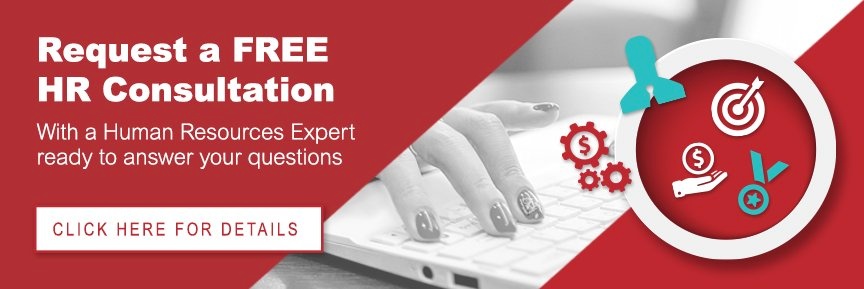
In January 2020, the new W-4 form went into effect for any new workers hired after the first of the year. While the change claimed to make it easier for employees to more accurately withhold federal income tax from their paychecks, it instead proved to be a confusing shift for many workers. Depending on how much and how frequently you receive income, it’s essential to understand these changes to properly fill out your form or know when to consult a tax professional for guidance.
The W-4 form determines how much money an employer withholds from employees' paychecks. The new form has three new allowances you can claim, which can lower the amount of taxes withheld from their paychecks. It's essential to ensure employees fill out the W-4 form correctly because incorrect information could lead to too much or too little tax withheld from paychecks. That can cause some major issues by either incurring large payments come filing season or by taking too much out of each paystub.
Reasons the W-4 Form Changed
The W-4 form's changes intended to more accurately withhold tax from each person’s paycheck. The new system removed the number of withholdings and no longer estimates the withholding amount from paychecks. Instead, it uses data tables to determine withholdings based on set income amounts at regular timetables. While that works well for people whose income comes solely from set paychecks, anyone who earns income through commissions, multiple jobs, or side incomes will quickly find multiple issues.
Workers who were in their jobs prior to the shift can choose which form to follow, as they can change to the new form at any point they choose. Your employees don't have to wait until the end of the year or until they start a new job and can update their W-4 at any time. When you have a major life event, such as a marriage, divorce, or receive additional income, adjusting your tax withholding will better reflect your current status to balance your owed taxes or refund amount.
Changes to the W-4
The most obvious change to the W-4 form is its length. It is now a full page, with multiple sections that require close reading to understand what they involve. The basic components have stayed the same - name, address, filing status, and social security number - and it still allows individuals to claim some exempt statuses. However, business owners should be aware of the few updates to the form.
The IRS now allows employees to claim multiple exemptions on their W-4 forms. Employees can claim more allowances if they have dependents or other qualifying tax deductions.
It is easier for employees to claim exemption from federal income tax withholding. They no longer need to complete a separate exemption form and can simply indicate their exempt status on the W-4 form itself.
The new W-4 form is longer and doesn't include separate worksheets to determine the number of allowances you can use. This change aimed to simplify the form and make it straightforward and easier to understand, though it made it more complicated in other ways.
Components of the New W-4
The W-4 form consists of four sections. Here is a brief description of what each one covers, as well as some advice on what they include without you realizing it.
1. Personal Information
This section is for basic employee information. They'll enter their name, address, social security number, and tax-filing status. If you file jointly when married, it will affect how you fill out the following section.
You will only need to complete the following steps if they apply to you, which depend on your household circumstances.
2. Multiple jobs or joint filing for married couples
If an employee has multiple jobs or files jointly with a spouse who has at least one job, they'll need to complete this section to ensure accurate withholdings.
When filing for two jobs, either that they work simultaneously or hold multiple seasonal positions, they must have roughly equivalent salaries (as in, not a smaller side income, which you’ll account for in Section 4). However, the employee fills out the W-4 for their highest-paid position, which may not be for your company. This section should be left blank on all their other W-4 forms.
Section 2 has three subsections, which break down as follows:
- 2(a) uses the tax withholding estimator to determine your withholdings, which is similar to a standard deduction. It relies on a straightforward income at set intervals to calculate your withholdings. To fill this out most accurately, it’s helpful to have a copy of a current paystub and last year’s tax forms.
- 2(b) is for people with multiple jobs, as mentioned above. It refers people to Page 3 to fill out the Multiple Jobs Worksheet.
- 2(c) is where spouses file jointly. Both parties must check this box, but only the highest earner can claim dependents.
If an employee files jointly with their spouse, who both earn the same amount of money, they'll need to check the appropriate box on the W-4. Importantly, they both need to do this on their individual forms. It’s important to have a better understanding of how much income your spouse makes, which they will use to fill out the Multiple Jobs Worksheet on page 3 to provide income information from both parties.
There, you will use the tables on page 4 to determine taxable income for either two job or three job households. You will then list the number of pay periods, then divide the taxable income by the pay periods to calculate your withholding amount. The IRS claims this is less accurate than their estimator.
One of the biggest complications people run into when filing this W-4 is not having proper information about theirs and their spouse’s income. If this is the case for you, it may be prudent to consult with your accountant or another tax professional to ensure proper filing. For people who receive inconsistent income amounts, such as those paid on commission or relying on tips, their withholdings, this form will not properly reflect their withholdings. In such case, they’ll want to adjust the amount in Section 4.
However, employees don’t have to do this and can instead use line 4© to instruct their payroll team to withhold an extra sum from their paychecks. Some employees may not want to reveal they have another job, which ensures more accurate withholdings.

3. Claiming Dependents
Claiming child tax credits is now built into the w-$ form. Employees who make less than $200,000 per year as an individual or less than $400,000 per year if they file jointly can enter how many dependents they have in this section. They will then multiply that amount by the credit amount. This section requires knowing your spousal or full household income to ensure you receive proper credits and withholdings, as only the highest earner claims deductions. Only fill out this section once per household.
When filing dependents, you will do the following:
- Multiply the number of children under 17 by $2,000 and list the amount as a deduction
- Multiply the number of other dependents by $500 and list that amount
It then prompts you to put the sum total of your deductions.
4. Other Adjustments
If an employee wants additional tax withheld from their paycheck, they can note that here. It could include accounting for additional income not from their standard job, taking the standard or itemized deduction, increasing tax withholding for other circumstances, or getting a more significant tax refund. While this section is listed as optional, not filling it out can cause significant issues for households and companies due to inaccurate withholdings.
Its three subsections are as follows:
- 4(a) lets you list income that is not from other jobs, which includes smaller side incomes or investment earnings, such as interest, dividends, or retirement income.
- 4(b) allows you to reduce your withholding by claiming additional deductions other than the standard deduction. It prompts you to use the Deductions Worksheet on page 3 to calculate what else you are eligible for, then you enter the result in this section.
- 4(c) is for extra withholdings, if you want to withhold additional tax from each pay period, either to adjust for expected income or to get a bigger refund.
You will want to make sure your information is accurate, especially if you itemized deductions in the previous tax year or have high income and complex tax returns.
5. Employee Signature and Date
Section 5 is straightforward and simply where you sign and date. It also includes an Employers Only section to include their name, address, first date of employment, and EIN.
Gain Expert Guidance to Navigate Changes
Ensure all employees sign their W-4 form before returning it to you for your payroll team to process. Payroll, and all the associated documents and compliance assurances, present challenges for small businesses, including employee W-4 forms. They're bound to have questions on how to fill them out, especially new employees and those confused by the changes because they haven't needed to update their forms in years. You can guide your employees well when you understand the form, how it works, and how employees need to complete it.
All of this comes at a time cost to you, however. Luckily, you have options to help both you and your employees with the expert help you receive from outsourced HR solutions. Partnering with a Professional Employer Organization (PEO) can help you process payroll effectively and accurately while providing guidance and support to your employees, like when they have questions about completing a W-4.
However, there are limitations to how these entities can help when it comes to filing taxes. While they can provide guidance in filling out the forms, it is crucial to complete your due diligence in reading what the IRS says about W-4 forms, or consult their CPA or tax professional to ensure they complete the form and withholdings properly.

